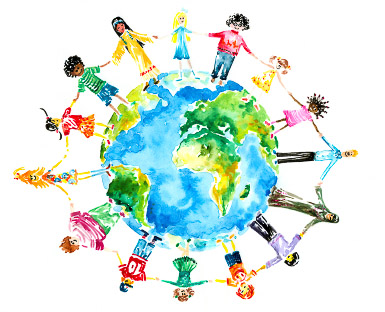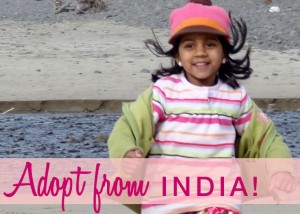In this blog post, Abhiraj thakur, a student of NALSAR University of Law, writes about the issues surrounding inter-country adoption. He throws light on the existing framework of international and local laws that regulate the practice and highlights the problems associated with it.
Adoption of a child has been the part of the human society for a long time. The presence of this practice lies in the fact that love and care are considered necessary in this world for any human or animal. For children whose parents have died or for some other reason cannot look after the child, it is considered beneficial for the child and for the society as a whole to give that child to some other willing people who can look after it and provide unconditional love and affection. With changing times, the practice of adoption has undergone a number of changes. In modern times, the practice of adoption has become much more complex. With every country having laws to regulate the practice, certain legal issues cropped up. Since the world has become small with the advent of technology and better modes of communication, inter-country adoptions has become a common phenomenon.
Put in simple words, inter-country adoption refers to the adoption of a child by a person belonging to a different country. Over the last two decades, the number of inter-country adoptions has almost tripled. The practice has gained a foothold in India as well. The practice is especially in vogue among film stars. Today, we see many film stars and other famous personalities adopting children from developing and under developed countries. With the presence of local as well as international laws dealing with adoption, the legal scenario of inter-country adoption becomes an extremely pertinent issue.
International Scenario
Legal Framework
The Hague Convention
The increasing trend of inter-country adoptions was for, the first time, observed by the United Nations in 1980s and efforts began to develop laws to regulate the practice. In 1993, a conference on private international law took place in Hague, Netherlands. Subsequently, the Hague Convention on Protection of Children and Co-operation in Respect of Inter-country Adoption was adopted, which is popularly referred to as the Hague Convention of 1993. It came into force in 1995.
UN Convention on Rights of Child
Adopted in 1989, the convention, among other things, talks about Inter-country adoption. Article 21(c) of the convention creates an obligation on the member states to look for possibilities of enacting certain laws and safeguards with respect to inter-country adoption. Also Article 21(b) of the convention talks about adopting proper measures to ensure safe inter-country adoption.
Major Issues with International Laws
The international framework is often considered far more stringent as compared to several local laws of adoption. Some uniform requirements are laid down, which is mandatory for member countries to adopt. Some problematic issues are:
State of Residence
The prospective parents need to confirm their state of residence. The process of confirmation varies from country to country which leads to the possibility of arbitrariness in the procedure involved. For example, in the United States, for an adopted to get visa, he/she needs to meet the eligibility criteria of Naturalization and Immigration service of the state.
Time taking Process
As per a UN report, international adoption usually takes more than 15 months to finalize. The state agencies, while working to validate the status of the child as ‘adoptable’, often suffer from unwarranted laxity in the process.
Indian Scenario
Internal adoptions in India are governed by the Hindu Adoptions and Maintenance Act of 1956 and the guardianship and Wards Act of 1890. With respect to legislations governing inter-country adoptions, there is no specific statute as of now in the country even though it is a well known practice and a long line of jurisprudence flow dealing with the issue. India being signatory to both the conventions are obligated to make certain safeguards for inter-country adoption in the country.
Judicial Approach to Inter-country Adoption
In the decade of 1980s, India witnessed an unprecedented rise in cases of inter-country adoption. The lack of any specific statute laying down guidelines or procedures dealing with inter-country adoption made it an area of much contention between the parties involved. The judiciary has played a commendable role in providing safeguards in inter-country adoption.
The Supreme Court, for the first time, elaborately dealt with inter-country adoption in the case of Laxmikant Pandey v Union of India.[1] The case was the result of a petition filed by a Delhi-based lawyer Laxmikant Pandey, who submitted that various agencies and social organizations involved in rescuing children and giving them in adoption to foreign parents often indulge in unscrupulous malpractices which is contrary to the very objective of adoption i.e., betterment of children. The Supreme Court, taking cognizance of the petition, raised its concern on non-availability of any comprehensive law dealing with inter-country adoption in the country.
 Guidelines laid down:
Guidelines laid down:
Sponsorship of Adoption
For limiting the role of individuals in providing children to be adopted, the court laid down that every application by a foreigner for the adoption of an Indian child needs to be sponsored by child welfare agency that is recognised and licensed by the government of India. Many cases of child trafficking are reported in India every year where individuals sell of children to foreign entities. An efficient implementation of this guideline would ensure that no individual is able to sell a child out to a foreigner.
Application to juvenile court
Further, the most striking guideline was that no application for inter-country adoption of a child can directly be entertained by agencies involved in adoption. The prospective parents need to file an application in the juvenile court of valid jurisdiction and for the adoption, the application further needs to be validated by the court.
Age of the adopted Child
Upholding the principle of the betterment of the child, the court further made a recommendatory cap on the age of the children to be given in adoption. The considered it preferable that the child being given for inter-country adoption is below 3 years of age. Keeping in mind the change of environment and social settings that a child might encounter in a new country, it becomes easier for the child to adapt if adoption is done in early ages of upbringing.
Consonance with the local laws
Supreme Court tried to deal with the problem of non-availability of the specific statute by extending the provision of local laws to inter-country adoption. The Guardianship and the Wards Act of 1890 was extended to cover relevant procedures with regards to inter-country adoption. Also an initiative from legislature in this regard was called from the legislature.
Another case is of Re Jay Kevin Salerno[2] where the Bombay High Court said that the international blend of laws that cover inter-country adoption needs to be interpreted as harmoniously as possible so as to ensure that substantive goals of adoption are realised.
Present Challenges in Inter-country adoption
Legal Challenges
Trafficking and Abuse
As per a UN report, about 5 million children are sold off every year to be used as slaves in different parts of the world.[3] A line of conventions, though criminalize trafficking and provide stringent counter measures, but the practice has still not been eradicated altogether. During the 2004 tsunami, there were reports of large scale selling of abandoned children.[4]
Institutions to deal with the issue
As of today, the issue of inter-country adoption is covered under the wide arena of child rights and so, international agencies like the UNICEF[5] are not able to devote enough attention to the issue. The Hague convention recommended of the setting up an organization to exclusively deal with inter-country adoption but the plan forever remained on paper. For a country like India, we can learn from various countries of the world which have efficiently set up institutions for this purpose. Lithuania, in 1998, set up the Public Adoptions Authority (PAA)[6] that looks after all the adoption-related issues in the country including inter-country adoption.
Social and Ethical Challenges
Conflict with Religion
A problem with effective legal framework for inter-country adoption is that the practice of adoption is a contentious issue among many religions. In Confucian law, for instance until recently, adopted children had no rights to inherit property and the practice of adoption was severely restricted in Japan and South Korea. Under Sharia law, adoption is considered as violation of the Quran. Verse fifth of the thirty-third Surah in Quran states that adopted children cannot be named after the adoptive father. This verse is interpreted as prohibition of adoption by God himself.
A problem with effective legal framework for inter-country adoption is that the practice of adoption is a contentious issue among many religions. In Confucian law, for instance until recently, adopted children had no rights to inherit property and the practice of adoption was severely restricted in Japan and South Korea. Under Sharia law, adoption is considered as violation of the Quran. Verse fifth of the thirty-third Surah in Quran states that adopted children cannot be named after the adoptive father. This verse is interpreted as prohibition of adoption by God himself.
Interracial Adoptions
Even in the era of globalization, race relations form an important area of dispute when it comes to adoption. Often, the question is raised whether the trans-racial adoption of children from a black community by different Caucasian and Anglo-Saxon races is in the best interests of children. The countries like New Zealand and Australia have historically raised concerns regarding entry of other races in their country.[7]
[1] 1984 AIR 469, 1984 SCR (2) 795
[2] AIR 1988 Bom 139
[3] United National Bureau of Child rights report, 2012 Pg 74-75.
[4] United Nations 2nd periodic report of state parties, The Indian Ocean, 2004.
[5] United National Children’s Emergency Fund
[6] United Nations 1st periodic report on State parties, Lithuania, 1992.
[7] Department of Economic and Social Affairs, United Nations report 2006.
 Serato DJ Crack 2025Serato DJ PRO Crack
Serato DJ Crack 2025Serato DJ PRO Crack













 Allow notifications
Allow notifications



